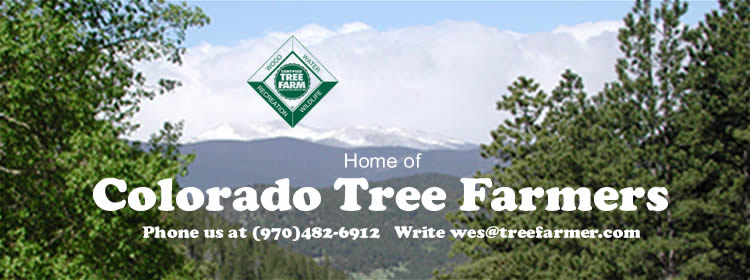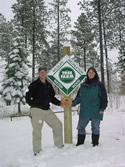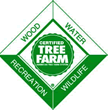

 |
Tree Farmer Alert |
Friday, July 6, 2012 |
Colorado Tree Farmers are a network of land- owners that share forestry resources.

Feel free to forward this alert to a friend.
New readers, if you would like to receive an email alert like this whenever new information about the pine beetle epidemic or any other content is added to our website, write stumpmaker@gmail.com and ask to be added to the Tree farmer Alert email list. It's free!
| Be confident that what you do in your forest |
from: I grouped several fact sheets together in on file on land recovery after fire. Hope it’s useful. Spread around as you see fit. Randy Moench Read fact sheets (large file) _________________________________ from: 1) We know that while the fire destroyed numerous trees and some of those undoubtedly harbored this seasons mountain pine beetle the fire hasn't stopped the MPB in our area. There are lots of unimpacted trees, some of which also harbor beetles. AND the increase stress on trees scorched by the fire will make them more susceptible to MPB. 2) Other beetles like Douglas-fir beetle and Ips are notoriously present post fire. So we're likely to see more activity from those beetles in the next few years as a result of fire. So onto preventative sprays... 1) I'm thinking that chemical sprays exposed to high heat or directly to fire will have lost some if not all of there effectiveness - a. the product is on the bark, if it has been burned then I would assume the product has been burned as well. b. most chemicals degrade faster exposed to heat. This is something I'm trying to get more information on. 2) I'm concerned that if preventative sprays were reapplied immediately post fire, depending on the individual tree, that the sprays might not adhere well to the bark due to the presence of ash/soot/charred bark. This is something else I'm trying to get more information on. From a tree protection stance I think that preventative treatment of remaining trees will be more important the next few seasons because in fire impacted areas the trees remaining represent a smaller selection of hosts AND if they've experiences additional stressors then they are more likely to be predisposed to less successful in defending against MPB. HOWEVER, I hesitate to tell people to re-contract their tree sprayers if I'm not confident that the product will effectively adhere to the trees OR if the need really exists. Of course, we're at the prime time to have conducted treatment already. Hopefully, some of the resources I've contacted will get back to be promptly. I'll put out something more official as soon as they do. In the meantime feel free to share the thoughts I've put together here with people that contact you. Sky
|
Got a question about your woods?You can find the answers to many of your questions on our website, www.treefarmer.com, but that's a big place. If you get lost, write us and we'll help you find the answers. We're your neighbors just down Send your questions to stumpmaker@gmail.com |
 the road, behind the green and white Tree Farm signs and we care about what's happening in our forests.
the road, behind the green and white Tree Farm signs and we care about what's happening in our forests.